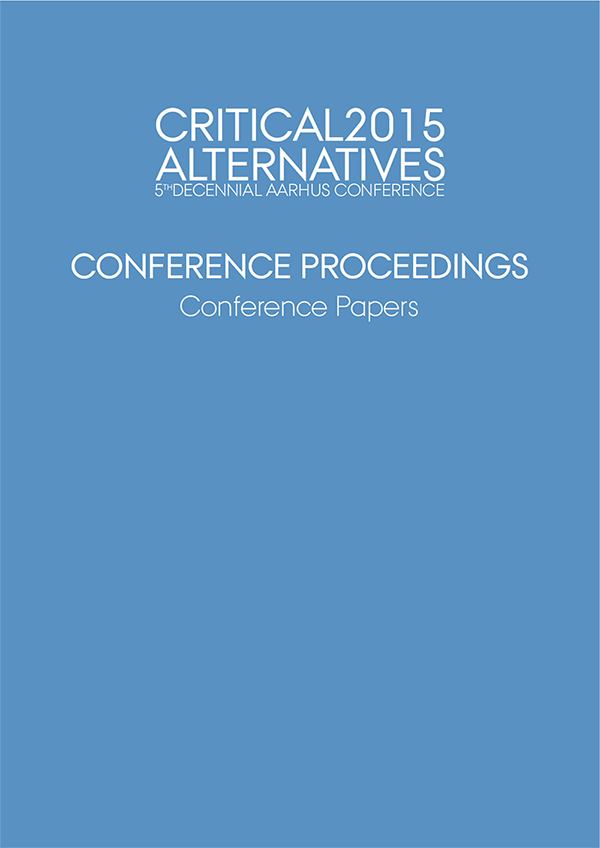Note to Self: Stop Calling Interfaces “Natural”
DOI:
https://doi.org/10.7146/aahcc.v1i1.21316Nøgleord:
Natural user interfaces, criticism, terminologyResumé
The term “natural” is employed to describe a wide range of novel interactive products and systems, ranging from ges- ture-based interaction to brain-computer interfaces and in marketing as well as in research. However, this terminology is problematic. It establishes an untenable dichotomy be- tween forms of interaction that are natural and those that are not; it draws upon the positive connotations of the term and conflates the language of research with marketing lingo, often without a clear explanation of why novel interfaces can be considered natural; and it obscures the examination of the details of interaction that ought to be the concern of HCI researchers. We are primarily concerned with identify- ing the problem, but also propose two steps to remedy it: recognising that the terminology we employ in research has consequences, and unfolding and articulating in more detail the qualities of interfaces that we have hitherto labelled “natural”.
Referencer
Barthes, R. 1993 [1957], Mythologies. Vintage, London.
Blackler, A.L. & Hurtienne, J. 2007, Towards a unified view of intuitive interaction: definitions, models and tools across the world. MMI-Interaktiv, 13. pp. 36-54.
Bødker, S. Through the interface: A human activity ap- proach to user interface design. Hillsdale, NJ, Lawrence Erlbaum, 1991.
Foucault, M. 2001 [1966] The order of things: an ar- chaeology of the human sciences, Routledge.
Gibson, K.R. & Ingold, T. (eds.) 1993, Tools, Language, and Cognition in Human Evolution, Cambridge Univer- sity Press.
Hansen,L.K.2014,What'sinaword?:Whynaturalisn't objectively better, Interactions, 21, 1, pp. 22-23.
Haslanger, S. 2000, Feminism in metaphysics: Negotiat- ing the natural., in Hornsby & Fricker (eds.), The Cam- bridge companion to feminism in philosophy, Cam- bridge University Press.
Hespanhol, L. & Tomitsch, M. 2015, Strategies for In- tuitive Interaction in Public Urban Spaces, Interacting with Computers 2015.
Lakoff,G.andJohnson,M.1980,Metaphorsweliveby. University of Chicago Press, Chicago.
Leap Motion. “Leap Motion, Product”. http://leapmotion.com/product, accessed 2015-02-16.
Microsoft Research “NUI: Natural User Interface”, http://research.microsoft.com/en-us/collaboration/ fo- cus/nui/default.aspx, accessed 2015-02-16
Murphy, S. 2013, White Paper: Design Considerations for a Natural User Interface (NUI). Texas Instruments.
Norman, D. 2010, Natural user interfaces are not natu- ral. interactions 17, 3.
O'hara, K., Harper, R., Mentis, H., Sellen, A. and Tay- lor, A. 2013, On the naturalness of touchless: Putting the “interaction” back into NUI. ACM Trans. Comput.- Hum. Interact. 20, 1, Article 5.
Saul, J. 2012, ‘Feminist Philosophy of Language’, in Zalta, E. N. (ed.) The Stanford Encyclopedia of Phi- losophy (Winter 2012 Edition),.
Ullrich, D. & Diefenbach, S. 2010, INTUI. Exploring the Facets of Intuitive Interaction. In J. Ziegler & A.
Schmidt (Eds.) Mensch & Computer 2010 (pp. 251-260). München: Oldenbourg.
Weiser, M. 1991, The computer for the 21st century. Scientific American, Sept. 1991, pp. 94-104.




